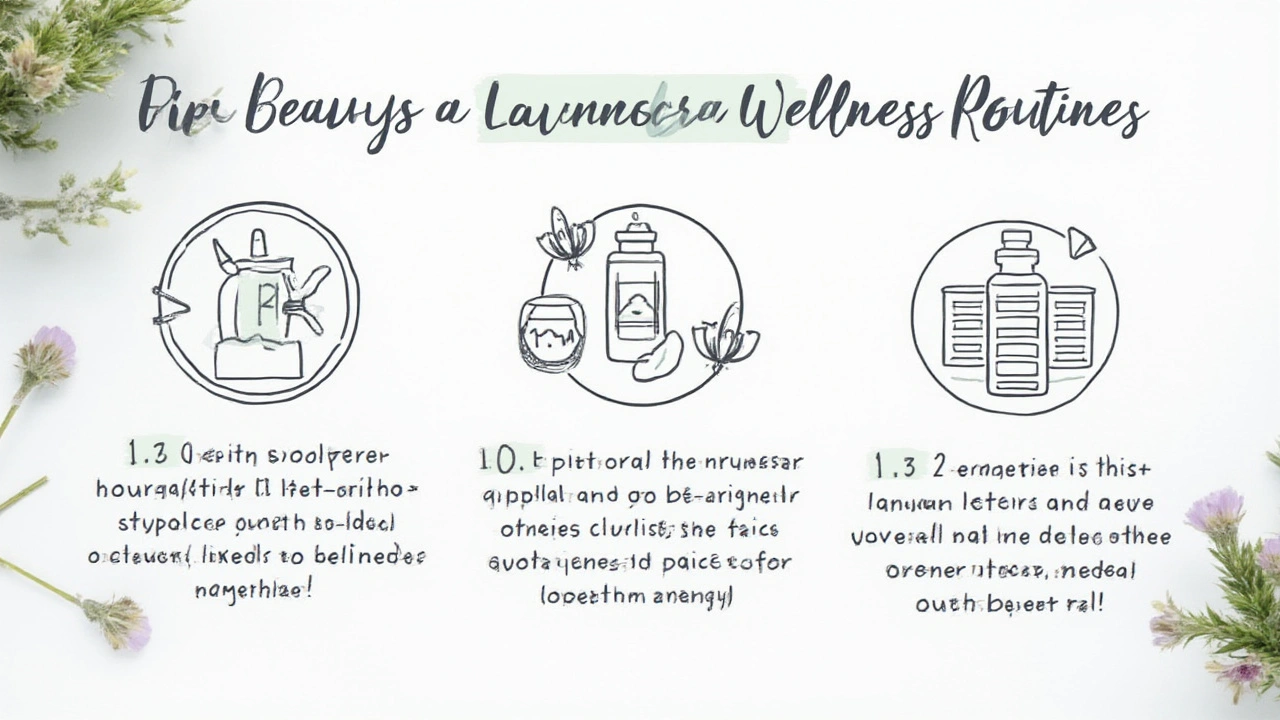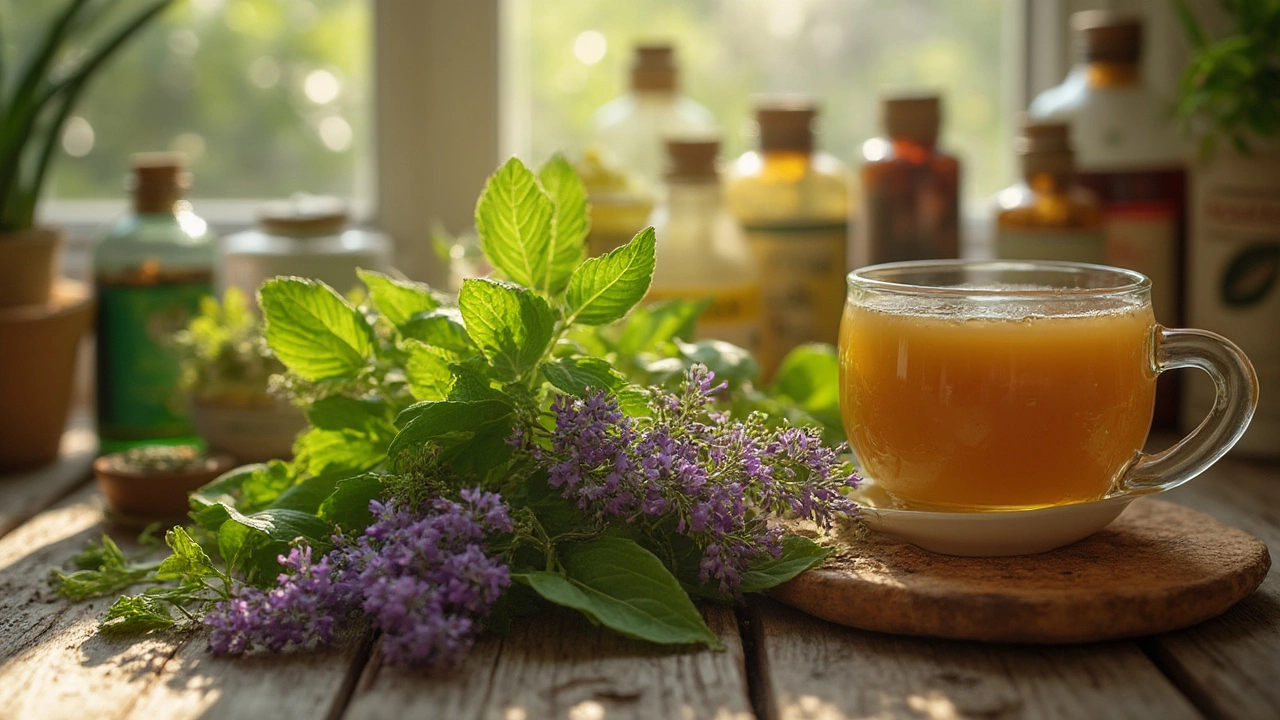If you’ve ever peeked into wellness aisles or scrolled supplement blogs, you’ve probably noticed the same stuff over and over—turmeric, fish oil, magnesium—it’s like a greatest hits of healthy living. But comfrey? That’s a name you don’t hear as much. Maybe you’ve seen it pop up in a herbal salve, or buried in a tiny section of a garden magazine, but most people walk right by. That’s a shame because comfrey has been a quiet staple in some cultures for centuries, and it holds way more potential than most of us realize. This plant has stories, secrets, and a long-standing reputation that makes its role in dietary supplements a hot topic for anyone who likes to look beyond the basics.
Why Comfrey Deserves a Spot in Your Supplement Lineup
Let’s talk honestly—anyone looking into supplements wants results. We’re talking about real impact: less soreness, better skin, stronger hair, maybe even faster healing. The thing about comfrey is, it circles all these goals, sometimes more efficiently than trendy supplements. This fuzzy-leaved herb, once called “knitbone,” earned its old nickname for how it seemed to help bones and tissues mend faster. When you look at traditional uses in places like Eastern Europe and parts of Asia, comfrey’s roots and leaves were made into poultices, teas, even tonics (long before flavor mattered; trust me, it isn’t delicious).
The main star in comfrey is allantoin, a chemical known for supporting cell growth and repair. Imagine allantoin as your skin’s best friend, gently nudging cells to renew faster. You’ll find allantoin in many skincare products today for exactly that reason—even big brands brag about it. On top of that, comfrey contains rosmarinic acid, which has anti-inflammatory and pain-relieving potential. That’s why it’s famous for easing joint stiffness or muscle soreness after intense exercise.
The data backs this up, too. A 2012 clinical review in Phytotherapy Research looked at comfrey-based creams for back pain and found participants reported marked improvement—faster and more noticeable than some non-steroidal medications. Here’s the part that surprised a lot of folks: comfrey’s impact wasn’t just “maybe” or “slightly,” it was clinically significant over placebo. That’s impressive for an herb you probably can’t even find at your local drugstore.
You can actually see the evolution of comfrey’s reputation. For generations, Russian peasants used it in family recipes as a “heal-all” infusion when nothing else seemed to work. German natural health advocates have published case studies since the 19th century, even arguing for comfrey’s place above common folk remedies. Fast forward to today: sports therapists in the UK have quietly recommended (and used) comfrey ointments on injured athletes for years. You don’t get to keep that kind of tradition without something in your corner.
So should you swallow comfrey leaves whole or start drinking root tea by the gallon? No! More on safety in a sec. But don’t let the fact that it isn’t splashed across every aisle fool you; comfrey’s real problem might be that it’s too effective for its own good, and has a complicated story about how to use it smartly.

The Science (and Caution) Behind Comfrey Use
Okay, here’s where it gets spicy: comfrey is a heavy hitter, but you can’t just toss it in your smoothie and hope for superpowers. There’s a reason for its slightly mysterious reputation in dietary supplement circles. The root and leaves are chock-full of several compounds, but a big one to watch is pyrrolizidine alkaloids (PAs). In pure, high doses, PAs can strain your liver. That’s why some countries have banned raw or unprocessed comfrey for internal use. Safe use is all about preparation, processing, and knowing what you’re taking.
The thing is, comfrey creams, gels, or ointments made with properly processed extract are another ball game. Peer-reviewed trials, like the one in 2013 from Germany’s Federal Institute for Risk Assessment, found no significant PA transfer when applied topically per directions—meaning comfrey balms really can ease sore muscles or irritated joints without the worries that come with swallowing unprocessed roots.
Still, if you hear about “comfrey supplements,” always check if it’s internal (like capsules or teas) or topical. In Europe and the US, the FDA and similar agencies have cracked down on supplements that contain unprocessed comfrey root, and reputable companies now use PA-free or extracted versions. When in doubt, pick a topical product from a brand that can show you how they manufacture and test for PA removal.
Let’s geek out for a second: Want a look at comfrey’s stats compared to typical pain relief options? Check out this table comparing a few common applications:
| Remedy | Active Compound | Application | Reported Relief (%) | Main Side Effect Warning |
|---|---|---|---|---|
| Comfrey cream | Allantoin, Rosmarinic acid | Topical (muscles/joints) | 70-80% improvement (within 1 week) | Skin irritation (rare), Not for broken skin |
| Oral NSAIDs | Ibuprofen, Naproxen | Oral (systemic) | 60-75% (longer timeline) | GI upset, Increased blood pressure |
| Arnica gel | Helenalin | Topical (bruises, pain) | 65-70% improvement | Allergic reactions (rare) |
Notice how comfrey creams often match or beat some popular alternatives for topical pain relief, and fewer people report negative reactions—when used as directed and on unbroken skin.
If you poke around wellness forums, you’ll find athletes and gardeners swapping stories about comfrey’s help for sprains, twisted ankles, or even after long bike rides. The secret: only use externally, pick products tested for PA content, and don’t mess with homemade root tinctures unless you really know your stuff. Pregnant people, nursing moms, and anyone with liver issues? Skip comfrey altogether or talk to a trustworthy doctor first.
When it comes to skin and wound care, the allantoin in comfrey helps speed up new cell growth. That’s why you might see it listed in fancy skin serums—even K-beauty brands get in on the action. But keep in mind, while comfrey is great for small scrapes and bruises, don’t put it straight on deep wounds or infected cuts.
And here’s a quotable moment from a solid science voice, just to drive the point home:
“Processed comfrey extracts, applied topically, offer safe and significant relief for acute muscle and back pain, especially where mainstream options fall short.” — Dr. Angelika Burger, European Journal of Pain, 2021
Notice how this isn’t a backhanded compliment; it’s a nod to comfrey’s specialty—speedy, targeted recovery for life’s little injuries, without messing up your insides in the process.

Getting the Most from Comfrey: Real Tips and User Insights
If you’re sold on comfrey’s superpowers but want to avoid rookie mistakes, let’s dig into smart hacks for fitting it into your routine. First: keep it topical, unless you have access to a supplement brand that’s ultra-transparent about how they’ve removed or neutralized PAs. Look for PA-free on the label (good companies test for it and will brag about the fact). Ointments, creams, roll-ons, and even soaking tablets for the bath are usually the safest routes.
Want a quick cheat sheet?
- Only use on unbroken, clean skin: Comfrey doesn’t belong anywhere near open wounds, stitches, or ulcers.
- Test a small patch first: Even with natural stuff, allergies or sensitivities can happen. Try a bit on the inside of your elbow a day before slathering it on.
- Don’t use comfrey creams for more than 2 weeks straight without a break, unless your doctor clears it.
- If you try a PA-free comfrey capsule (rare, but possible), take the lowest recommended dose, and stop if you notice any yellowing of the skin or digestive discomfort.
The perfect scenario for most healthy adults looks like this: you felt a twinge in your back after playing tennis, or your knees protest after a weekend hike. You rub in a thin layer of comfrey cream, just twice a day, right where it hurts. Within days, you notice the difference—not just in pain, but in how quickly the swelling reduces. Grocery clerks, runners, yoga fans, and even office workers who hunch over laptops say similar things. Comfrey isn’t a magic bullet, but it’s a solid, time-tested addition when you want fast, visible results without relying on pharmaceuticals.
If you’re a gardener, you can even grow comfrey at home—just wear gloves, as the fuzzy leaves can irritate sensitive skin. Mature plants pop up year after year with almost no care, and—here’s a fun hack—comfrey leaf tea (for plants, not people) is one of the best all-natural fertilizers for tomatoes, peppers, and roses. So even if you don’t put it in your supplement drawer, comfrey can still power up your vegetable patch.
Curious how to spot a trustworthy comfrey product? Check for:
- PA-free, certified labeling (especially if you’re buying from abroad)
- Batch testing results available online or on request
- Transparent ingredient lists—no “mystery blend” nonsense
- Endorsements, not from random influencers, but from reputable herbal organizations or registered herbalists
Wondering where to learn more? Herbalist Matthew Wood’s guidebooks or the Plant Medica database online dig into the broader uses and history if you want to get nerdy about herbal medicine. There are lively communities sharing real-world feedback, hacks, and DIY recipes on Reddit and dedicated gardening forums (r/herbalism is a good place to start).
So next time you’re about to order your usual pain gel or recovery product, maybe toss a comfrey cream into the cart. You might find your new favorite secret weapon hiding in plain sight.
